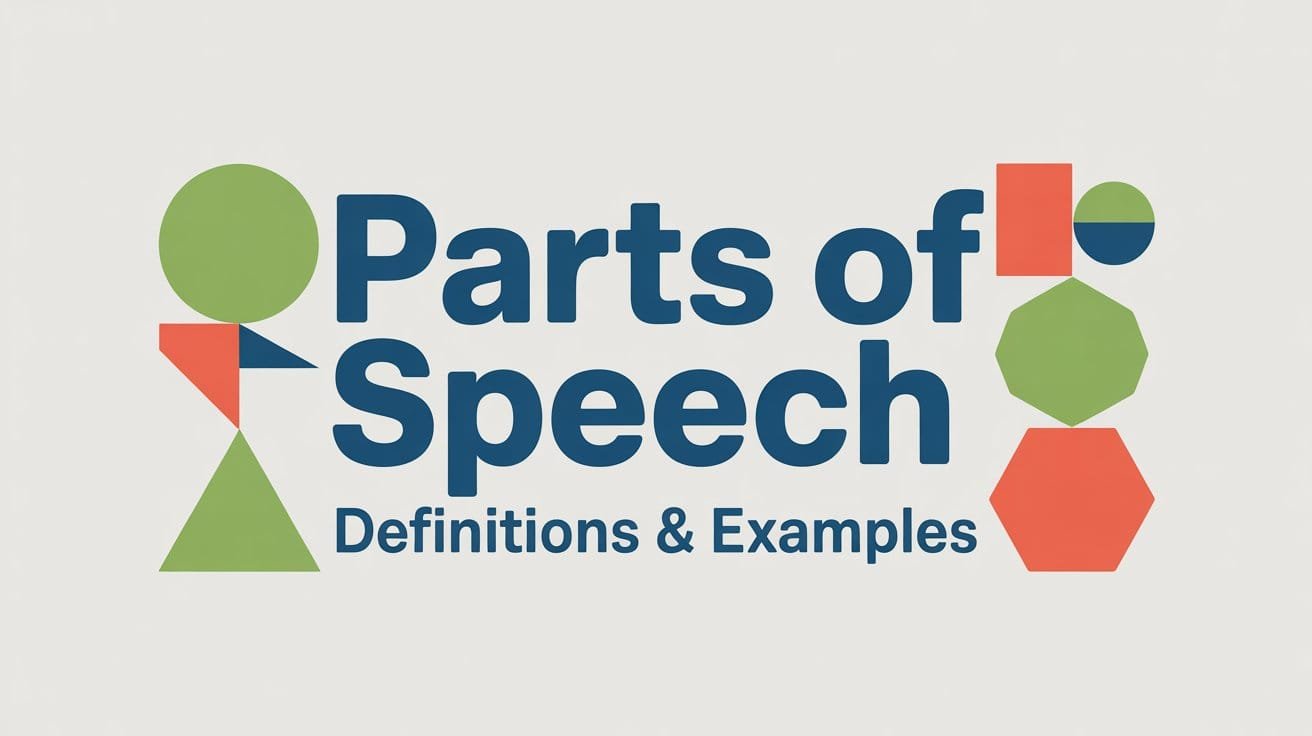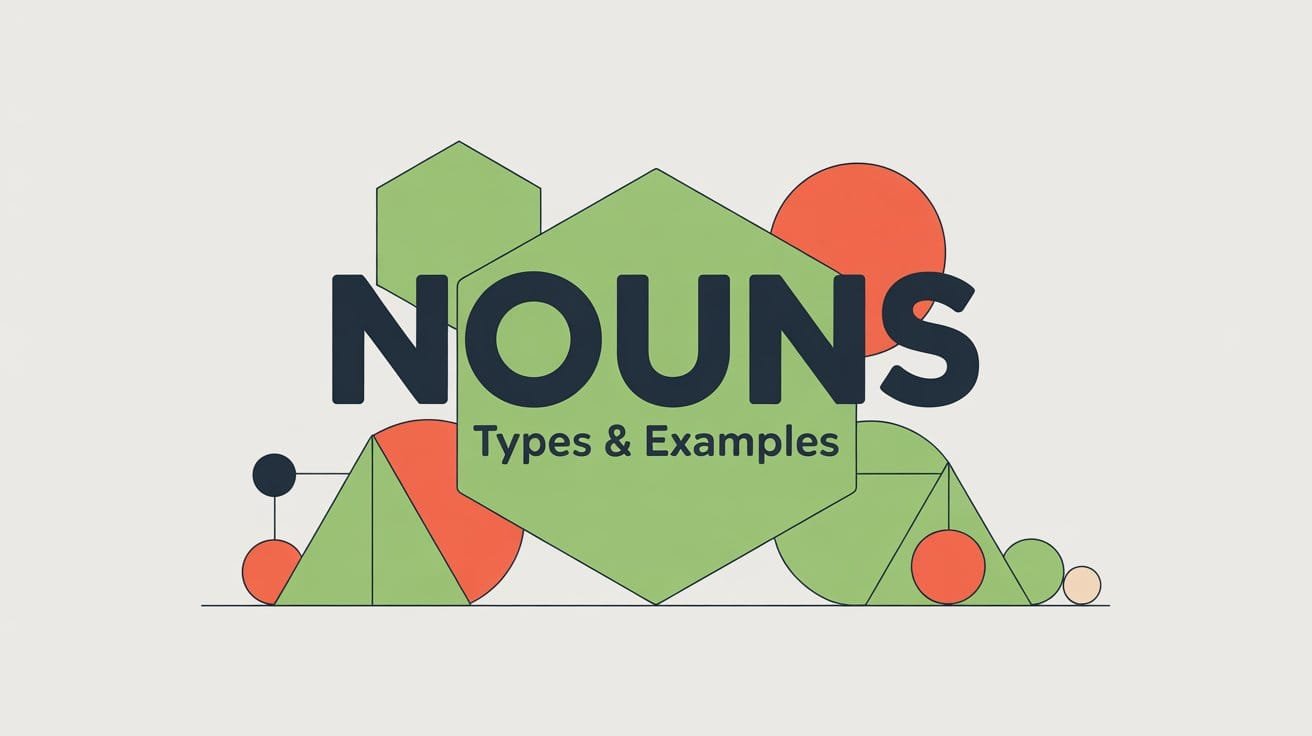Nouns do more than name people, places, or things. They play different roles inside a sentence, shaping meaning and clarity. A noun can act as the subject that performs an action, the object that receives it, or even complete the meaning of a verb. The role a noun plays depends on how it connects with other words, not just on what it names.
When you understand the functions of nouns in a sentence, your reading and writing become more precise. You can see why a sentence works the way it does and spot problems more easily. This clarity also helps you build stronger sentences, choose better structures, and avoid common grammar mistakes that come from confusing one noun role with another.
What Is a Noun Function?
A noun function refers to the role a noun plays within a sentence. While all nouns name people, places, things, or ideas, their function depends on how they’re used grammatically.
In some sentences, a noun may serve as the subject (the doer of the action). In others, it may act as an object (receiving the action), or even as a complement (renaming or describing something else).
Understanding noun functions is essential for:
- Identifying sentence structure
- Choosing the correct verb forms
- Writing clear, grammatically correct sentences
Nouns as Subjects
One of the most common functions of a noun is to act as the subject of a sentence. The subject is the noun (or noun phrase) that performs the action or is being described.
To find the subject, ask: Who or what is doing the action?
Examples:
- The cat slept on the sofa.
- Emma studies French.
- Those books are mine.
In each case, the noun (or noun phrase) comes before the verb and tells us who or what the sentence is about.
Subjects can be simple (one word) or complete (a full noun phrase).
Example:
- The tall boy with glasses won the prize.
(The entire phrase is the subject.)
Nouns as Direct Objects
A noun functions as a direct object when it receives the action of a transitive verb. In other words, it answers the question what? or whom? after the verb.
Examples:
- She closed the door. → What did she close? The door.
- They watched a movie. → What did they watch? A movie.
- I saw the fireworks. → What did I see? The fireworks.
The direct object usually comes right after the verb and is affected by the action. It’s an essential part of many complete sentences and helps express the full meaning.
Nouns as Indirect Objects
An indirect object is the noun that tells to whom or for whom the action of the verb is done. It usually appears before the direct object in a sentence.
To identify it, ask: Who received the direct object?
Examples:
- He gave his friend a gift. → Who received the gift? His friend.
- She told the children a story. → Who heard the story? The children.
- I sent my sister an email. → Who got the email? My sister.
If the indirect object is placed after the direct object, it must be part of a prepositional phrase:
- He gave a gift to his friend.
- She told a story to the children.
Both forms are grammatically correct.
Nouns as Predicate Nominatives (Subject Complements)
A predicate nominative is a noun that follows a linking verb (such as is, are, was, were, become, seem) and renames or identifies the subject. It doesn’t show action; it simply links the subject to more information about itself.
Examples:
- Mr. Lee is a teacher. → teacher renames Mr. Lee.
- Her dream was a career in medicine. → career in medicine identifies her dream.
- This building became a museum. → museum tells what the building became.
These nouns are also called subject complements because they complete the meaning of the subject by adding identifying or descriptive detail.
Nouns as Object Complements
An object complement is a noun that comes after a direct object and either renames or describes it. It gives more information about what the direct object has become or is considered.
Object complements typically follow certain verbs such as make, name, elect, consider, call, etc.
Examples:
- They elected her president. → president renames her (the direct object).
- We consider the trip a success. → success describes the trip.
- She called him a genius. → genius adds meaning to him.
Without the object complement, the sentence may still make sense, but it would be incomplete in meaning.
Nouns as Objects of Prepositions
A noun functions as the object of a preposition when it completes a prepositional phrase. Prepositions such as in, on, under, between, with, about, and to must be followed by a noun (or pronoun) to make sense.
The noun that follows the preposition tells us where, when, how, or what in relation to something else.
Examples:
- The keys are on the table.
- She walked through the park.
- We talked about the project.
- He sat next to his friend.
The entire phrase (on the table, through the park, about the project) functions as an adjective or adverb, while the noun (object of the preposition) anchors its meaning.
Nouns as Appositives
An appositive is a noun that sits next to another noun and renames it or gives more information about it. Appositives are often set off by commas, especially if the information is non-essential.
Examples:
- My brother, a doctor, lives in Chicago.
→ doctor renames my brother. - The insect, a beetle, crawled across the floor.
→ beetle explains what kind of insect. - Her friend Maya is visiting this weekend.
→ Maya is an essential appositive (no commas needed).
Tip: If the appositive adds extra (non-essential) information, use commas. If it’s needed to identify the noun, leave the commas out.
Nouns of Direct Address
A noun of direct address is used when a speaker or writer is talking directly to someone or something. It doesn’t act as the subject or object of the sentence. It simply shows who is being addressed.
Nouns of direct address are always set off by commas, and they’re common in both spoken and written English.
Examples:
- Lisa, can you help me with this?
- Thank you, everyone, for being here today.
- Please sit down, students.
Nouns as Adjective Modifiers (Noun Adjuncts)
Sometimes, a noun is used before another noun to act like an adjective. This is called a noun adjunct or noun as modifier. Even though it’s still a noun, it modifies another noun by describing its type, category, or purpose.
Examples:
- We visited the chicken farm. → chicken describes the type of farm
- He wore a gold ring. → gold describes what kind of ring
- I joined a yoga class. → yoga tells us the kind of class
These nouns don’t take a plural form, even when the meaning is plural.
Correct: shoe store
Not: shoes store
This structure is common in everyday English and helps create concise noun phrases.
Noun Functions in Noun Phrases
A noun phrase is a group of words that functions as a noun in a sentence. At the core of every noun phrase is a main noun, often supported by modifiers like articles, adjectives, or other nouns.
The main noun in the phrase still takes on the same roles: subject, object, complement, etc.
Examples:
- The tall man in a suit opened the door.
→ Entire noun phrase as the subject; man is the main noun. - She painted a beautiful picture of the mountains.
→ Noun phrase as the direct object; picture is the main noun. - A basket of apples sat on the table.
→ Noun phrase as the subject; basket is the head noun.
Common Errors with Noun Functions
Learning noun functions can be tricky at first, and some errors are easy to make, especially when multiple nouns appear in one sentence. Here are a few common mistakes and how to fix them:
Confusing Subject and Object
Some learners mix up the subject (who does the action) and the object (who receives it).
Incorrect: Me helped John with the project.
Correct: I helped John with the project.
Misidentifying Predicate Nominatives
Predicate nominatives follow linking verbs, not action verbs.
Incorrect: She sang the winner.
Correct: She is the winner.
Placing the Appositive Incorrectly
An appositive should be placed directly next to the noun it explains.
Incorrect: My sister lives in Mumbai, a lawyer.
Correct: My sister, a lawyer, lives in Mumbai.
Adding Apostrophes to Non-Possessive Nouns
Sometimes learners mistake plural nouns for possessives.
Incorrect: The dogs tail is wagging.
Correct: The dog’s tail is wagging.
FAQs About Noun Functions
What is the difference between a direct and indirect object?
A direct object receives the action of the verb. An indirect object tells to whom or for whom the action is done.
Example: She gave her friend (indirect object) a gift (direct object).
How can I identify a predicate nominative?
Look for a linking verb (like is, are, was, become) and ask if the noun after it renames or identifies the subject.
Example: He is a doctor. → doctor renames he
Can a noun serve multiple functions in a sentence?
Yes. A single noun may serve more than one function depending on the sentence.
Example: Lisa’s idea became the solution.
→ idea is the subject, solution is a predicate nominative



